It must be one of the most 'frequently asked questions' in art. Whole books have been written on the subject, and it is one of art's most explored and enduring themes. So what actually is the difference between 'naked' and 'nude'? In seeking an answer for myself, rather than diving into my own library, I'll see if I can come up with some of my own ideas with the help of artists whose treatment of this theme I particularly enjoy.
 Dutch Artist George Hendrik Breitner called his painting (above) Seated Half-Nude. His model is 'half-nude' because the artist shows the woman in the act of removing her chemise - an intimate moment. We might normally think that with such a private gesture she would be 'half-naked', and yet Breitner's title alone tells us that she is 'nude', and not 'naked'. Where does the difference lie? For me, it lies in the artist's own attitude, and in his treatment here of the painting itself. Breitner's brushwork is so chiselled and monumental, the forms so sculpted in paint, that he lifts his model away from the everyday through the sheer force of his artistry. The woman whom we see in the canvas is at the same time both an individual - the artist's model - and a more universal 'everywoman': a created form which emerges from the paint in slabs of light and shadow. It is this 'more than the everyday world' aura that makes this woman 'nude'.
Dutch Artist George Hendrik Breitner called his painting (above) Seated Half-Nude. His model is 'half-nude' because the artist shows the woman in the act of removing her chemise - an intimate moment. We might normally think that with such a private gesture she would be 'half-naked', and yet Breitner's title alone tells us that she is 'nude', and not 'naked'. Where does the difference lie? For me, it lies in the artist's own attitude, and in his treatment here of the painting itself. Breitner's brushwork is so chiselled and monumental, the forms so sculpted in paint, that he lifts his model away from the everyday through the sheer force of his artistry. The woman whom we see in the canvas is at the same time both an individual - the artist's model - and a more universal 'everywoman': a created form which emerges from the paint in slabs of light and shadow. It is this 'more than the everyday world' aura that makes this woman 'nude'.
 This study (above) by contemporary digital artist Craig Mullins displays the same freedom of brushwork - although in this case the artist's 'brush' is a digital one. And Mullins, every bit as much as Breitner before him, is 'at work' here. We feel in the brush lines the striving to understand and describe the planes of the model's body: the arch of the back, the skin stretched taught below the rib cage. The artist is not out to capture feminine beauty, but to reach an understanding of the forms which the model's anatomy describes. And again, as with Breitner's model, Mullins is little concerned with a portrait of a specific individual. The woman's face is articulated with the same rough but incisive brushwork as the rest of the figure.
This study (above) by contemporary digital artist Craig Mullins displays the same freedom of brushwork - although in this case the artist's 'brush' is a digital one. And Mullins, every bit as much as Breitner before him, is 'at work' here. We feel in the brush lines the striving to understand and describe the planes of the model's body: the arch of the back, the skin stretched taught below the rib cage. The artist is not out to capture feminine beauty, but to reach an understanding of the forms which the model's anatomy describes. And again, as with Breitner's model, Mullins is little concerned with a portrait of a specific individual. The woman's face is articulated with the same rough but incisive brushwork as the rest of the figure.
 With the treatment of the nude by Boris Zaborov (above) we are in a radically different setting. Here this removal of the figure from the everyday world is pushed even further by the artist's use of a neutral background. It could be anywhere, at any time and place. Contradictorily, Zaborov's model is a specific individual, her face anything but anonymous. She gazes steadily out at us from her drifting world, as if afloat in a passing dream.
With the treatment of the nude by Boris Zaborov (above) we are in a radically different setting. Here this removal of the figure from the everyday world is pushed even further by the artist's use of a neutral background. It could be anywhere, at any time and place. Contradictorily, Zaborov's model is a specific individual, her face anything but anonymous. She gazes steadily out at us from her drifting world, as if afloat in a passing dream.
But why need the figure be nude at all? Another often-asked question. Different artists will give different reasons, but my own reaction is again to do with this removal from the everyday. The clothes we wear express much, both about who we are as individuals, and about the time and the place in which we live. For this reason, models who are fully-clothed become 'portraits' almost by default. Clearly, with a nude model there must be another factor at work.
 In a very real sense, to step out of one's everyday clothes is to step out of time - to remove oneself from any context with the everyday world. To be nude is not to be naked. It is for this very reason that for a model to be nude can prove to be an empowering experience. Javier Valhonrat's composition (above), from his Possessed Space series, is a clear example. However 'boxed-in' the artist has chosen to portray her, this model in her nudity has all the freedom to occupy an 'eternal now'. For her to have worn even so much as basic underwear would have looked ludicrous, and this is what we sense.
In a very real sense, to step out of one's everyday clothes is to step out of time - to remove oneself from any context with the everyday world. To be nude is not to be naked. It is for this very reason that for a model to be nude can prove to be an empowering experience. Javier Valhonrat's composition (above), from his Possessed Space series, is a clear example. However 'boxed-in' the artist has chosen to portray her, this model in her nudity has all the freedom to occupy an 'eternal now'. For her to have worn even so much as basic underwear would have looked ludicrous, and this is what we sense.
So if all these images are what being 'nude' is about, and if we can define it through these examples, where does that leave 'naked'? If nudity removes someone from the everyday, then nakedness must do the opposite. And indeed: you are naked if you are about to climb into bed with your lover. You are naked if you are about to step under the shower. And if you as a model leave your clothes in a neat pile on a chair of the artist's studio, and step forward with the thought that you are serving the needs of art, then with that step you leave the everyday world to become empoweringly nude!
 Dutch Artist George Hendrik Breitner called his painting (above) Seated Half-Nude. His model is 'half-nude' because the artist shows the woman in the act of removing her chemise - an intimate moment. We might normally think that with such a private gesture she would be 'half-naked', and yet Breitner's title alone tells us that she is 'nude', and not 'naked'. Where does the difference lie? For me, it lies in the artist's own attitude, and in his treatment here of the painting itself. Breitner's brushwork is so chiselled and monumental, the forms so sculpted in paint, that he lifts his model away from the everyday through the sheer force of his artistry. The woman whom we see in the canvas is at the same time both an individual - the artist's model - and a more universal 'everywoman': a created form which emerges from the paint in slabs of light and shadow. It is this 'more than the everyday world' aura that makes this woman 'nude'.
Dutch Artist George Hendrik Breitner called his painting (above) Seated Half-Nude. His model is 'half-nude' because the artist shows the woman in the act of removing her chemise - an intimate moment. We might normally think that with such a private gesture she would be 'half-naked', and yet Breitner's title alone tells us that she is 'nude', and not 'naked'. Where does the difference lie? For me, it lies in the artist's own attitude, and in his treatment here of the painting itself. Breitner's brushwork is so chiselled and monumental, the forms so sculpted in paint, that he lifts his model away from the everyday through the sheer force of his artistry. The woman whom we see in the canvas is at the same time both an individual - the artist's model - and a more universal 'everywoman': a created form which emerges from the paint in slabs of light and shadow. It is this 'more than the everyday world' aura that makes this woman 'nude'. This study (above) by contemporary digital artist Craig Mullins displays the same freedom of brushwork - although in this case the artist's 'brush' is a digital one. And Mullins, every bit as much as Breitner before him, is 'at work' here. We feel in the brush lines the striving to understand and describe the planes of the model's body: the arch of the back, the skin stretched taught below the rib cage. The artist is not out to capture feminine beauty, but to reach an understanding of the forms which the model's anatomy describes. And again, as with Breitner's model, Mullins is little concerned with a portrait of a specific individual. The woman's face is articulated with the same rough but incisive brushwork as the rest of the figure.
This study (above) by contemporary digital artist Craig Mullins displays the same freedom of brushwork - although in this case the artist's 'brush' is a digital one. And Mullins, every bit as much as Breitner before him, is 'at work' here. We feel in the brush lines the striving to understand and describe the planes of the model's body: the arch of the back, the skin stretched taught below the rib cage. The artist is not out to capture feminine beauty, but to reach an understanding of the forms which the model's anatomy describes. And again, as with Breitner's model, Mullins is little concerned with a portrait of a specific individual. The woman's face is articulated with the same rough but incisive brushwork as the rest of the figure. With the treatment of the nude by Boris Zaborov (above) we are in a radically different setting. Here this removal of the figure from the everyday world is pushed even further by the artist's use of a neutral background. It could be anywhere, at any time and place. Contradictorily, Zaborov's model is a specific individual, her face anything but anonymous. She gazes steadily out at us from her drifting world, as if afloat in a passing dream.
With the treatment of the nude by Boris Zaborov (above) we are in a radically different setting. Here this removal of the figure from the everyday world is pushed even further by the artist's use of a neutral background. It could be anywhere, at any time and place. Contradictorily, Zaborov's model is a specific individual, her face anything but anonymous. She gazes steadily out at us from her drifting world, as if afloat in a passing dream.But why need the figure be nude at all? Another often-asked question. Different artists will give different reasons, but my own reaction is again to do with this removal from the everyday. The clothes we wear express much, both about who we are as individuals, and about the time and the place in which we live. For this reason, models who are fully-clothed become 'portraits' almost by default. Clearly, with a nude model there must be another factor at work.
 In a very real sense, to step out of one's everyday clothes is to step out of time - to remove oneself from any context with the everyday world. To be nude is not to be naked. It is for this very reason that for a model to be nude can prove to be an empowering experience. Javier Valhonrat's composition (above), from his Possessed Space series, is a clear example. However 'boxed-in' the artist has chosen to portray her, this model in her nudity has all the freedom to occupy an 'eternal now'. For her to have worn even so much as basic underwear would have looked ludicrous, and this is what we sense.
In a very real sense, to step out of one's everyday clothes is to step out of time - to remove oneself from any context with the everyday world. To be nude is not to be naked. It is for this very reason that for a model to be nude can prove to be an empowering experience. Javier Valhonrat's composition (above), from his Possessed Space series, is a clear example. However 'boxed-in' the artist has chosen to portray her, this model in her nudity has all the freedom to occupy an 'eternal now'. For her to have worn even so much as basic underwear would have looked ludicrous, and this is what we sense.So if all these images are what being 'nude' is about, and if we can define it through these examples, where does that leave 'naked'? If nudity removes someone from the everyday, then nakedness must do the opposite. And indeed: you are naked if you are about to climb into bed with your lover. You are naked if you are about to step under the shower. And if you as a model leave your clothes in a neat pile on a chair of the artist's studio, and step forward with the thought that you are serving the needs of art, then with that step you leave the everyday world to become empoweringly nude!




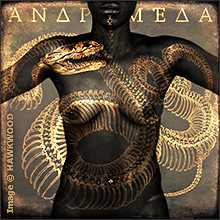
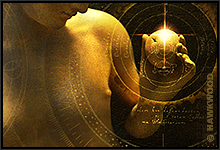




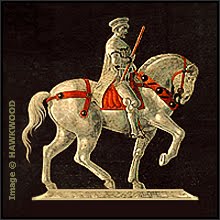
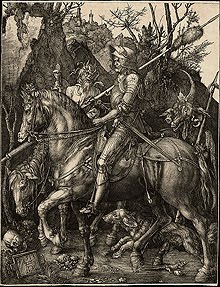
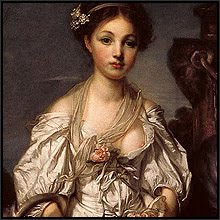










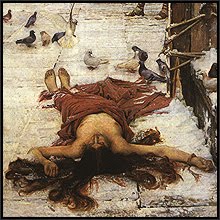

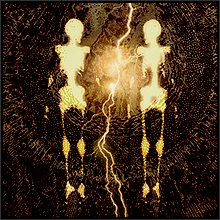
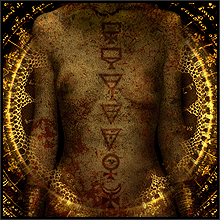
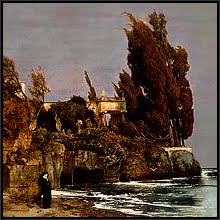
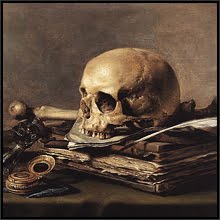
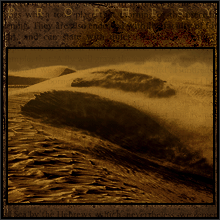

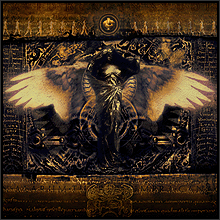

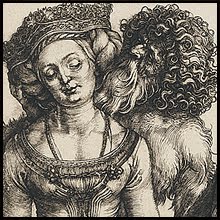
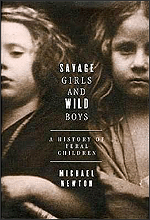

Very good elucidation of this duality, David.
ReplyDeleteYou make the real distinction between the objective and subjective nature of "naked & nude". It always seems to lie in the conscinsousness of the viewer for a personal intrepretation of the two.
Nice to 'see' you here, Cal! Yes, you're right - the viewer's reaction is always beyond the control of the artist. But I also think that the artist's input can 'guide' the viewer in a specific direction. How the artist thinks about the subject should communicate itself to the viewer.
ReplyDeleteBeautiful article.
ReplyDeleteFor me there was never anything vulgar in nakedness nor nudity. I suppose i perceive the human form as a work of art itself.
Lolita, I could not agree more! As you pointed out elsewhere, it is the context which makes the difference. One could also say that 'nude' is within the context of art, and 'naked' is, as it were, a term for everyday use. But both states are okay. I personally am radically opposed to any idea that attaches any concept of inherent 'wrongness' to the human body, whether that is anything to do with 'sin' in a religious context or something else. The bodies we have are what makes us human. We should feel comfortable with that.
ReplyDeleteWhy nude? Why not?
ReplyDeleteI'm with Lolita...the human body is beautiful, so why not worship it in its unclothed glory.
It's unfortunate that many people are so puritanical that this even has to be an issue.
I remember a news story a couple of years ago about how some parents sued a school/teacher, because the teacher had the gall to take the students to an art museum where they might *gasp* see a painting or a statue of a person without their clothes on.
On a lighter note, it also reminds me of this little classic:
The Art Critic
Haha! Thank you for that link, Katie! Who could say it more eloquently than Mr Cleese, Mr Palin, and Co.? ;-)
ReplyDeleteThat having been said, I believe that I recall a similar case to the one you mention. This one was about an art teacher at a school who had a law suit brought against her by irate parents who accused her of corrupting the minds of their children by discussing the subject in class, with examples from art books. To me, that's beyond prudish. It's just plain sick.
When I linked to this post on my Facebook profile, it generated a lot of comments (including from one of my own models!), all of them overwhelmingly positive about the nude as a subject for art, and seriously discussing why one situation is 'nude', when another might be 'naked'.
When my wife read this post, her comment to me was, 'And where are your own examples?'! So maybe sometime I'll get together a post of my own work themed around the nude. In view of the reactions I've had to this post, both here and on Facebook, perhaps there would be an interest for that.
Beautifully written and presented David. Your argument is well reasoned and considered. You're an art philosopher my friend. I like to remember sometimes that we are all naked under our clothes. We are all exposed under our veneer, but perhaps those who glory in self and take joy in beauty are nude?
ReplyDeleteReminds me of the book "Beauty" by Roger Scruton -- I think you would enjoy it very much, from what I've read on this blog!
ReplyDeleteHere's an excerpt from Scruton talking about art/nude versus pornography/the unclothed.
Art resists fantasy, and pornography of course encourages it.
"...the nude, in our tradition, is not naked but unclothed. In Titian the body is at rest just as it would be if it were protected from our gaze by a veil of clothing: it is a body under invisible clothes. We no more detach it from the face or the personality than we would detach the body of a woman fully dressed.
In Boucher [a painter of "voluptuous" subjects] the face is a pointer to the body, which is its raison d’etre. In Titian it is not exactly the other way round: for certainly the emotion of the painting resides in the flesh-tints, the light, softness and promise of the full female form. But in Titian the face keeps vigil over this form, quietly asserting ownership and removing it from our reach."
I meant, above:
ReplyDeleteart/unclothed versus pornography/naked
Merry Christmas & Happy New Year my friend.
ReplyDelete